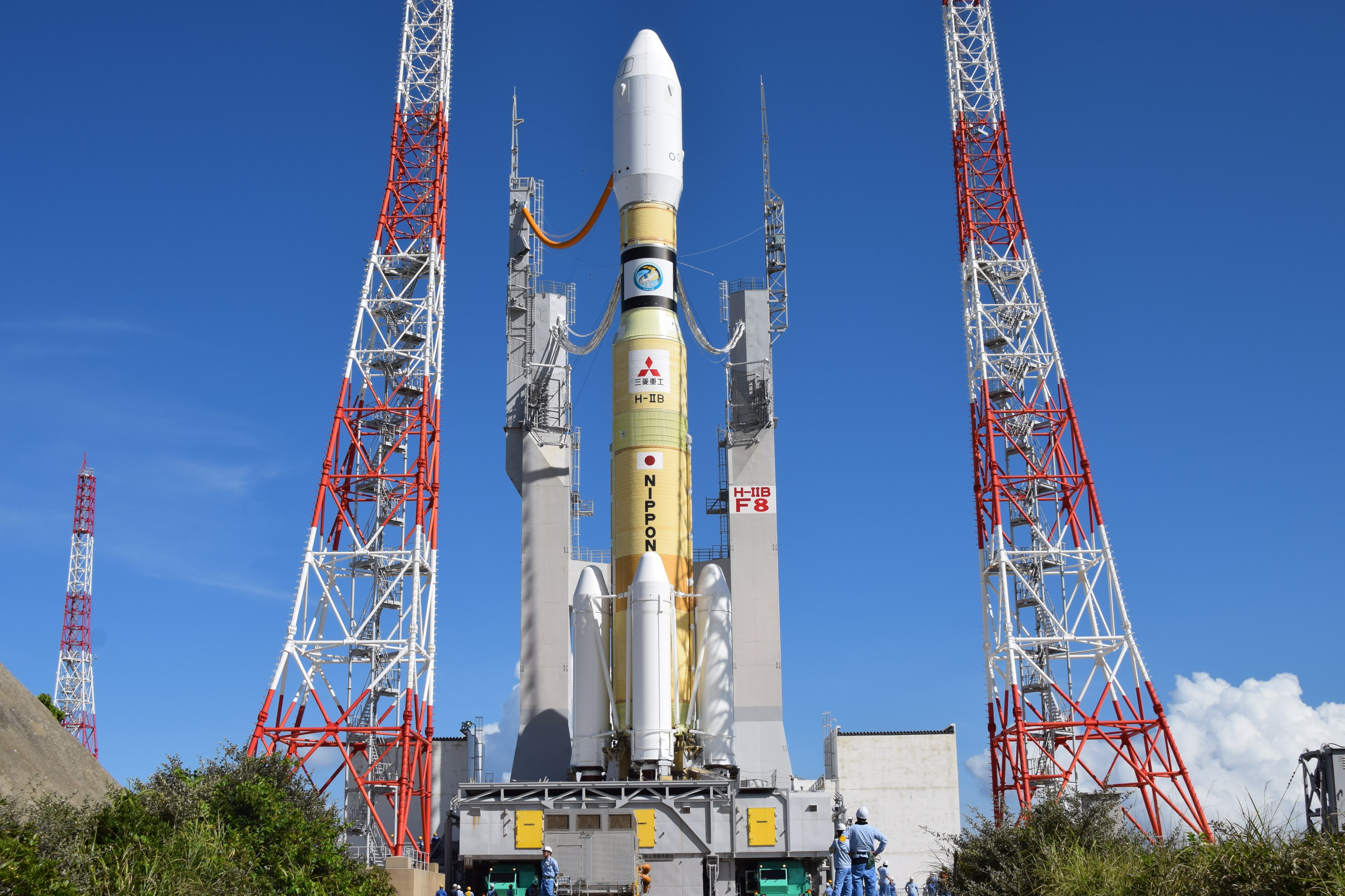Japan to Launch Robotic Cargo Ship to Space Station Today. Watch It Live
Liftoff is at 5:33 p.m. EDT (2133 GMT).

Update: JAXA and Mitsubishi Heavy Industries have postponed today's launch of the HTV-8 cargo ship due to a fire near the mission's H-IIB rocket's launchpad.
An unpiloted Japanese supply ship will launch to the International Space Station today (Sept. 10) and you can watch it leave Earth live courtesy of NASA and the Japan Aerospace Exploration Agency (JAXA).
The robotic spacecraft HTV-8 (also known as Kounotori8) will launch toward the space station from the Tanegashima Space Center in southern Japan at 5:33 p.m. EDT (2133 GMT). It will be 6:33 a.m. local time Wednesday at the launch site. You can watch the launch live here and on Space.com's homepage via NASA TV at 5 p.m. EDT (2100 GMT). JAXA is offering its own webcast here beginning at 5:07 p.m. EDT (2107 GMT).
HTV-8 is hauling more than 4 tons of supplies to the International Space Station for the outpost's six-person crew. By coincidence, the mission is launching on the tenth anniversary of JAXA's first-ever HTV launch in 2009.
Video: How Japan's HTV Cargo Ships Work
Related: Japan's HTV Space Truck Explained (Infographic)
"Named Kounotori, meaning white stork in Japanese, the craft will deliver six new lithium-ion batteries and corresponding adapter plates that will replace aging nickel-hydrogen batteries for two power channels on the station's far port truss segment," NASA officials said in a statement. "The batteries will be installed through a series of robotics and spacewalks by the station’s crew members later this year."
The spacecraft is also carrying a small, experimental satellite optical communication system called SOLISS, the experiment Hourglass to test the effects of gravity on powder and granular material and an upgrade for the station's Cell Biology Experiment Facility, NASA officials added.
Japan's HTV spacecraft (the name is short for H-II Transfer Vehicle) are brilliant gold, cylindrical cargo ships designed for one-way delivery trips to the International Space Station. They launch on JAXA's H-IIB rockets built by Mitsubishi Heavy Industries.
Photos: Japan's Robotic Space Cargo Ship Fleet
Each HTV spacecraft has an internal compartment to allow astronauts to unpack cargo inside the station, and an external payload area for equipment like the new solar array batteries, which are destined for the station's exterior. At the end of their missions, HTV vehicles are packed with unneeded items and released to burn up in Earth's atmosphere.
Get the Space.com Newsletter
Breaking space news, the latest updates on rocket launches, skywatching events and more!
If all goes well, HTV-8 will arrive at the space station early Saturday (Sept. 14) to be captured by astronauts using the station's robotic arm. The spacecraft will then be attached to an available docking port on the station's Harmony module.
NASA's will webcast HTV-8's arrival at the space station on Saturday beginning at 5:30 a.m. EDT (0930 GMT), with installation activities to continue at 8:30 a.m. EDT (1130 GMT).
- Space Station's Robotic Cargo Ship Fleet (A Photo Guide)
- Photos: Japan Launches HTV-4 Cargo Ship to Space Station
- JAXA: Japan's Aerospace Exploration Agency
Email Tariq Malik at tmalik@space.com or follow him @tariqjmalik. Follow us @Spacedotcom and Facebook
Join our Space Forums to keep talking space on the latest missions, night sky and more! And if you have a news tip, correction or comment, let us know at: community@space.com.

Tariq is the Editor-in-Chief of Space.com and joined the team in 2001, first as an intern and staff writer, and later as an editor. He covers human spaceflight, exploration and space science, as well as skywatching and entertainment. He became Space.com's Managing Editor in 2009 and Editor-in-Chief in 2019. Before joining Space.com, Tariq was a staff reporter for The Los Angeles Times covering education and city beats in La Habra, Fullerton and Huntington Beach. In October 2022, Tariq received the Harry Kolcum Award for excellence in space reporting from the National Space Club Florida Committee. He is also an Eagle Scout (yes, he has the Space Exploration merit badge) and went to Space Camp four times as a kid and a fifth time as an adult. He has journalism degrees from the University of Southern California and New York University. You can find Tariq at Space.com and as the co-host to the This Week In Space podcast with space historian Rod Pyle on the TWiT network. To see his latest project, you can follow Tariq on Twitter @tariqjmalik.









